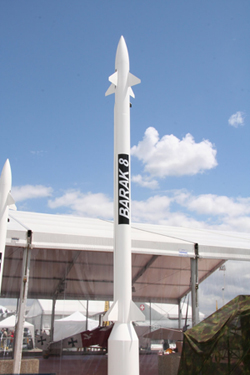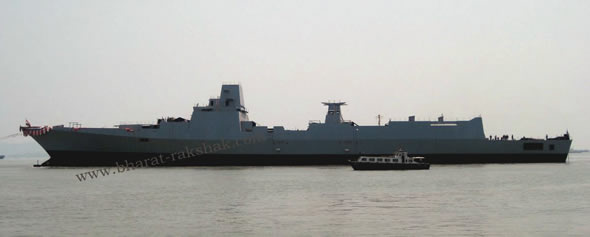
India and Israel are planning to conduct a system test of Barak 8 Medium Range Surface-to-Air Missile (MR-SAM) early next year. IAI and DRDO are cooperating in the development of the Medium and Long Range Surface to Air Missile (MR-SAM/LR-SAM) missiles, also known as Barak-8, are preparing for the next milestone in the program – testing with its entire supporting system, in early 2012. The Israel Navy also expects to filed the missile with its upgraded/new Saar 5 / 5B corvettes.
Barak 8, a critical development program for the navies of both countries, went through significant development delays since parts of the missile were not completed in time for testing. The first Barak 8 missile test took place in israel in May 2010. The Economic Times of india has recently quoted DRDO officials saying the test is now planned to be conducted in Israel in January of February 2012. The weapon qualification program will include eight test firings, to take place in israel and India, prior to induction into service. Elements of the system have already been delivered to India, including the four-plane MF-STAR phased array radar and shipboard electronic modules supporting the system.
The MRSAM missiles are scheduled to equip the three Kolkata class (Project 15A) guided missile destroyers currently under construction at the Mazagon shipyards in India. These vessels will be delivered to the Indian Navy in 2012 and their Barak-8 systems are expected to become operational a year later in 2013. Four additional Kolkata class destroyers (Project15B) will be equipped with an extended range version of the missile (ER-SAM) capable of intercepting targets at a range of 100 km. These destroyers will also carry the Brahmos II supersonic and new Nirbhany subsonic cruise missiles with offensive reach of 1,000 km.

The Indian Air Force is also planning to field the extended range version of the missile, as part of the LR-SAM program, enhancing the nation’s air defense capability with wide area, The system will employ advanced surface radars, airborne sensors and advanced datalinks to provide network-centric air defense capability against aircraft, cruise missiles and anti-ship guided missiles, with each site covering a range of 100-110km.
Barak 8 have incorporated an advanced multi-function electronically scanning array that continuously covers 360 degree, thereby providing a defensive shield in all directions while simultaneously functioning in target acquisition and surface search modes. In principle, each destroyer could provide air cover for a large battle group, or share defense assets with other surface combattants, to best respond to aerial or missile threats.

For the ground based system, each battery has it’s own control van and mobile command. Network centricity of the system is supported by the Command & Control element of each of these batteries communicating with other batteries and other air defense assets, sharing a common ‘sky picture’ thus providing positive identification of threats or friendly aircraft, missiles or non combatant elements, assisting commanders in deciding ow best to react to a threat. (co author: Debojit Sarkar, India)

















